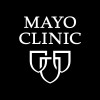
Health Care Seeking Behavior and Knowledge Assessment of Hungarian Women About Pelvic Floor Disorders...
Urinary IncontinencePelvic Organ Prolapse5 moreThe aim of this study is to assess women's health care seeking behavior and knowledge of urinary incontinence and pelvic organ prolapse and to culturally adapt the Prolapse and Incontinence Knowledge Questionnaire (PIKQ) for the Hungarian population.

Long Term Results of Surgical and Percutaneous Double Orefices Mitral Repair in Patient With p2...
Degenerative Mitral Valve DiseaseMitral RegurgitationMitral regurgitation is a pathology affecting the left atrioventricular valve that causes a volumetric and pressure overload in the left chambers due to the loss of unidirectionality normally guaranteed by the cardiac valve system. The gold standard for severe mitral regurgitation is currently mitral valve plastic surgery. Edge to edge, on the other hand, allows shorter CEC and aortic clamping times and does not require significant surgical experience in the field of mitral valve repair, therefore edge to edge could be an excellent strategy in patients suffering from mitral regurgitation caused by P2 prolapse when quadrangular resection cannot be performed. The main objective of the present study is to examine the medium to long-term outcomes (in terms of survival and plastic outcomes) of patients undergoing central edge-to-edge to treat posterior flap pathology (P2).

Evaluation of the Relationship Between Vaginal and Lower Urinary Tract Microbiomes and Infection...
Pelvic Organ ProlapseHysterectomy1 moreThe purpose of this study is to learn more about the microbes (bacteria) that live in the vagina and the bladder. The investigators are doing this research study to understand the relationship between microbes (the microbiome) and the occurrence of urinary tract infection following surgical removal of the uterus and pelvic organ prolapse repair. The investigators expect Lactobacillus and Gardnerella will be the dominant organisms for most women. Non-Lactobacillus dominant microbiome communities will be more common in women who ultimately develop postoperative urinary tract infection.

Vaginal Tactile Imaging in Assessment of Pelvic Floor Conditions
Pelvic Organ ProlapseThe clinical study includes investigation of the outcomes of surgery for biomechanical restoration of pelvic floor conditions, monitoring pelvic floor conditions under conservative treatment/management, identification and investigation changes of pelvic floor muscle contractions and their significance in characterization of pelvic floor conditions, assessment of tactile imaging reproducibility, including pelvic floor muscle contraction.

Pelvic Floor Dysfunction and Its Influence on Body Image and Sexual Function
Body ImageUrinary Incontinence7 moreThe first objective to determinate the prevalence of pelvic floor dysfunction in pregnant women and in the first year postpartum. The second objective is to assess the anatomical (both clinical and ultrasound), demographic and obstetric variables in symptomatic women and their association with pelvic floor dysfunction, sexual function and Body Image. This is a single center prospective cohort study. Women will be asked to fill out a questionnaire at the time of their 1st and 3rd trimester scan, at the postpartum checkup and 12 months postpartum. Furthermore, they will undergo a pelvic floor ultrasound at the time of their first and third trimester scan. The presence of pelvic floor dysfunctions will be recorded through validated self-administered questionnaires with five domains: Wexner questionnaire for anal incontinence, PAC-SYM for constipation, International Consultation on Incontinence Questionnaire Short Form for urinary incontinence, the Pelvic Organ Prolapse Distress Inventory for pelvic organ prolapse, POP/UI Sexual Questionnaire - IUGA revised for sexual function. The body image perception will be assessed using the Dutch-validated version of the self-administered Body Image Disturbance Questionnaire. The anatomy of the pelvic floor will be objectively assessed off line on 3D/4D transperineal ultrasound volumes and POP-Q examination. The demographic variables and information about the pregnancy and the delivery will be obtained from the medical records.

Pelvic Floor and Sexual Dysfunction in Women With Sjogren's Syndrome
Sexual DysfunctionPelvic Floor Disorders3 moreSjogren's syndrome (SS) is a chronic, systemic, autoimmune disease characterized by lymphocytic infiltration of all exocrine glands, especially tear and salivary glands, and is more common in women.

Minimally Invasive or Conventional Edge-To-Edge Repair for Severe Mitral Regurgitation Due to Bileaflet...
Barlow's DiseaseProlapse; MitralThe study evaluates the long-term results of patients affected by bileaflet prolapse in Barlow's Disease, treated with edge-to-edge technique between 1997 and 2011.

Pelvic Floor Muscles and Success in the Surgical Treatment of Stress Urinary Incontinence and Pelvic...
Stress Urinary IncontinencePelvic Organ Prolapse1 moreThe aim of the study is evaluation of the efficiency of pelvic floor muscles in the context of surgical outcomes in the treatment of stress urinary incontinence and pelvic organ prolapse.

Surgical Treatment for ODS With Rectal Prolapse Surgical Treatment for Rectal Prolapse
Constipation by Outlet ObstructionChronic obstinate constipation is hard to deal with in clinic. Especially for obstructed defecation syndrome(ODS). Rectal prolapse is the most common type of ODS. Lots of surgical procedures have been suggested for it but with unsatisfactory results.To develop new surgical treatment and to provide higher quality proof for this intractable condition is of significance.

What is the Prevalence of Female Pelvic Floor Disorders in Minnesota?
ProlapseUrinary Incontinence2 moreTo determine the prevalence of pelvic organ prolapse and urinary incontinence among women in Minnesota using a short web-based self-administered questionnaire.
